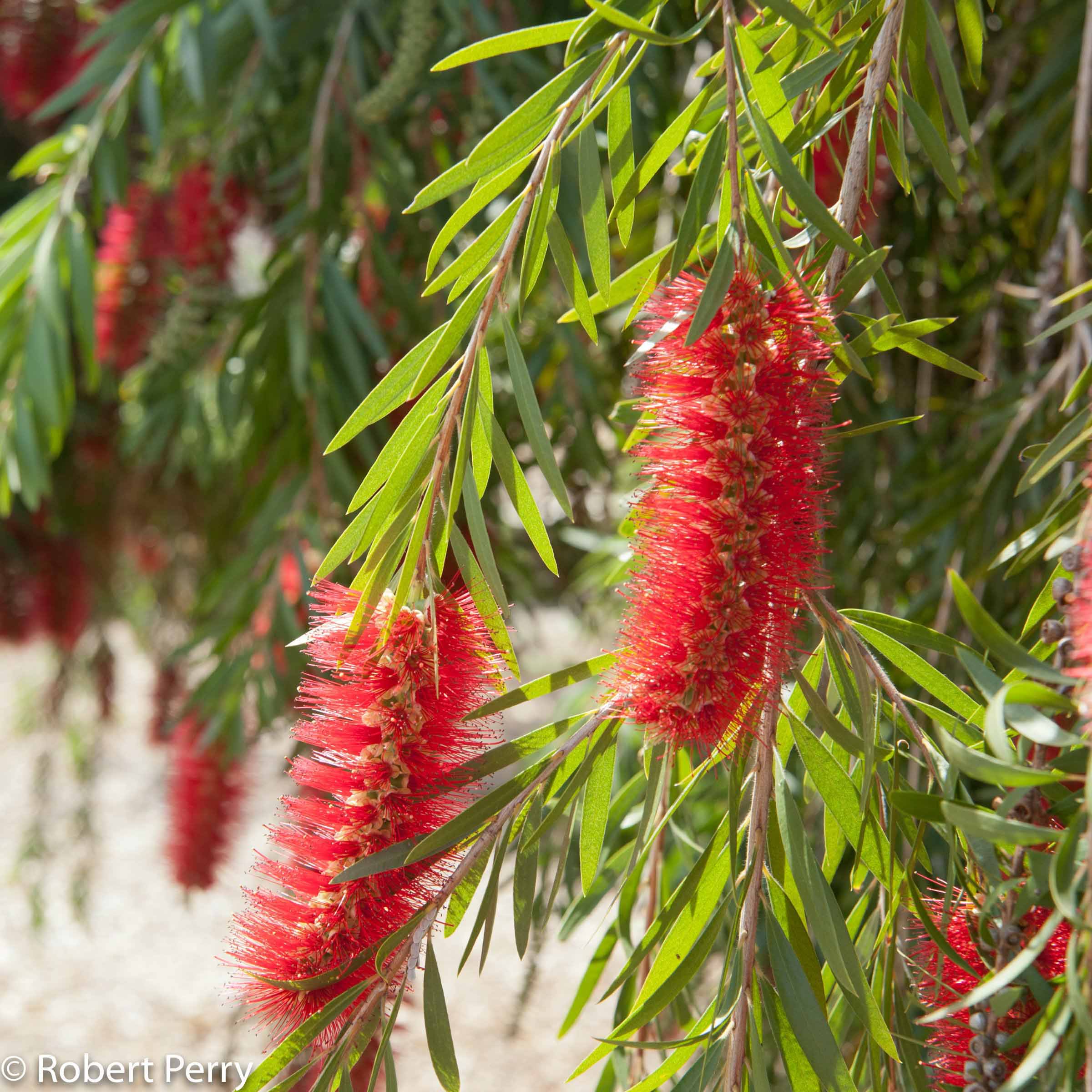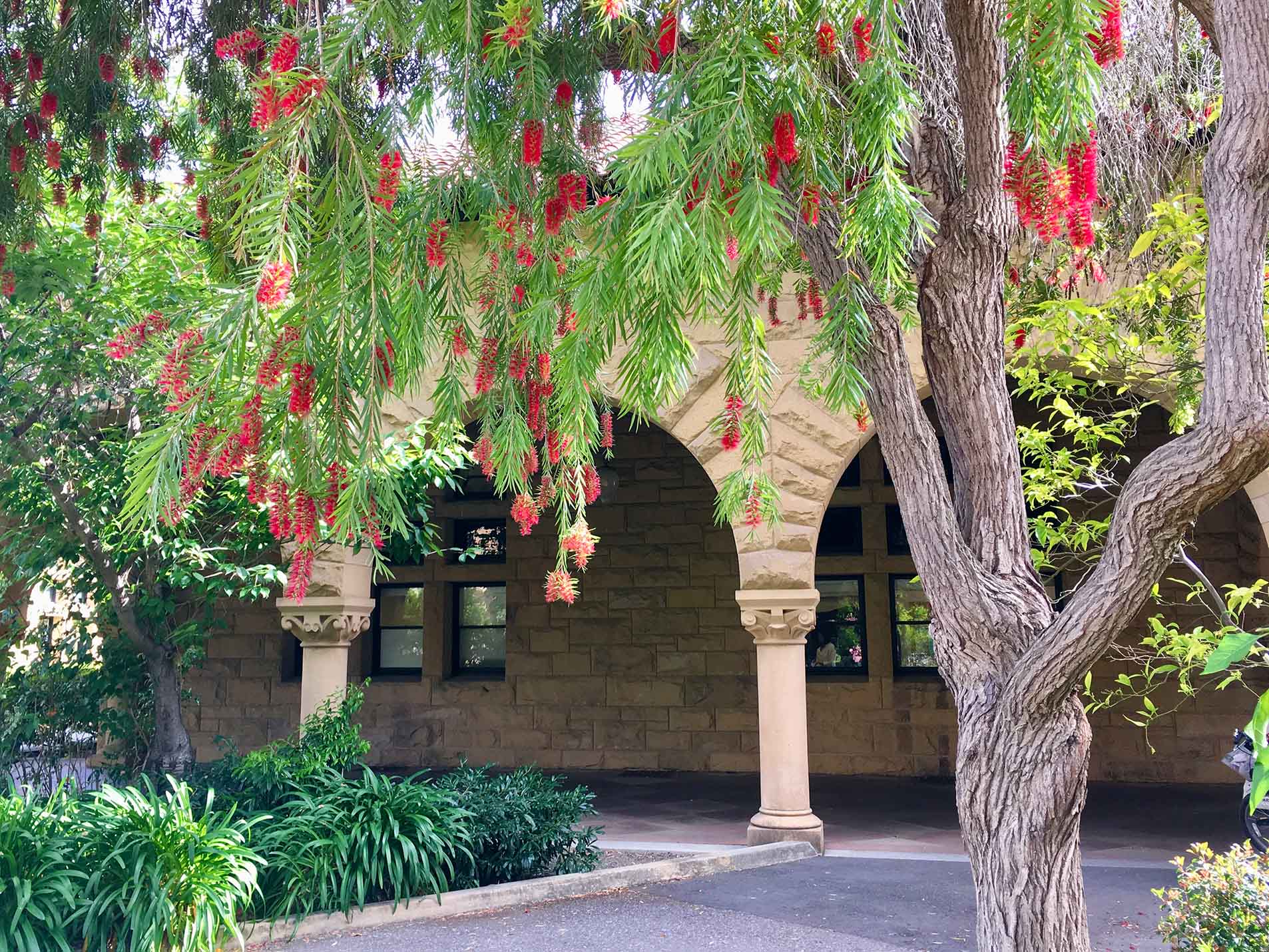The pink bottle brush plant, with its captivating blooms and distinct foliage, stands out as an ornamental treasure in the gardening world. Its versatility extends beyond aesthetics, making it a practical choice for various landscaping needs.
With its showy, bottle-shaped flowers and lush, evergreen foliage, the pink bottle brush plant adds a touch of elegance to any setting. Its adaptability to diverse conditions makes it a low-maintenance plant, suitable for both novice and experienced gardeners.
Characteristics and Cultivation: Pink Bottle Brush Plant

The pink bottle brush plant, scientifically known as Callistemon viminalis, is a captivating evergreen shrub that originates from Australia. Its distinctive appearance and charming flowers make it a popular choice for gardeners and landscapers alike.
Unique Features
This plant is characterized by its narrow, needle-like foliage that ranges in color from deep green to silver-green. Its most striking feature, however, is its cylindrical flower spikes, which resemble bottle brushes. These spikes, which can reach up to 6 inches in length, are composed of masses of small, fluffy flowers that bloom in a vibrant pink hue.
Growth Habit
The pink bottle brush plant is a fast-growing shrub that typically reaches a height of 6-10 feet and a width of 4-6 feet. It has an upright, bushy growth habit with multiple stems that spread outwards, creating a dense and attractive form.
Cultivation, Pink bottle brush plant
This plant thrives in well-drained soil with a pH between 5.5 and 7.0. It prefers full sun to partial shade and regular watering, especially during hot and dry periods. Mulching around the plant helps to retain moisture and suppress weeds. Pruning is not necessary but can be done to control the size and shape of the plant.
Benefits
In addition to its aesthetic appeal, the pink bottle brush plant also provides several benefits. It attracts butterflies, bees, and other pollinators to the garden. Its foliage and flowers contain essential oils that have antimicrobial and antifungal properties. Furthermore, the plant is relatively pest- and disease-resistant, making it a low-maintenance addition to any landscape.
Uses and Applications

The pink bottle brush plant offers a multitude of ornamental and practical applications in landscaping, gardening, and floral arrangements. Its vibrant, cylindrical blooms and evergreen foliage make it a popular choice for beautifying gardens and outdoor spaces.
Ornamental Uses
The plant’s striking flower spikes, resembling miniature bottle brushes, provide a burst of color to landscapes. Its dense, needle-like foliage creates a lush, green backdrop that complements the bright blooms. Pink bottle brush plants are often used in borders, hedges, and as focal points in flower beds.
In floral arrangements, the plant’s long-lasting flowers and foliage add texture and color. The blooms can be dried and used in wreaths and other decorative items.
Wildlife Attraction
The pink bottle brush plant is a magnet for wildlife, attracting birds, butterflies, and other pollinators. The nectar-rich flowers provide a valuable food source, while the dense foliage offers shelter and nesting sites.
Erosion Control and Hedging
The plant’s dense root system and ability to thrive in various soil conditions make it suitable for erosion control. It can be planted on slopes and embankments to prevent soil erosion.
Pink bottle brush plants can also be used as effective hedges. Their dense growth habit creates a natural barrier, providing privacy and wind protection.
Comparison with Other Species

The pink bottle brush plant, with its vibrant pink blooms and distinctive bottle-shaped flowers, is a popular choice for gardeners and nature enthusiasts alike. However, it is not the only species within the genus Callistemon. In fact, there are several other closely related species that share similar characteristics but also exhibit unique differences.
In this section, we will explore the similarities and differences between the pink bottle brush plant (Callistemon viminalis) and other bottle brush plant species. We will compare their appearance, growth habits, and cultivation requirements, providing a comprehensive overview of this fascinating genus.
Flower Color and Size
One of the most striking differences among bottle brush plant species is the color and size of their flowers. While the pink bottle brush plant is known for its vibrant pink blooms, other species exhibit a range of colors, including red, white, orange, and yellow.
- Callistemon citrinus (Lemon Bottlebrush): This species produces bright yellow flowers that resemble lemon blossoms.
- Callistemon salignus (Willow Bottlebrush): This species bears white flowers with a distinctive weeping habit.
- Callistemon phoeniceus (Desert Bottlebrush): This species produces red flowers and is native to arid regions of Australia.
In terms of size, the flowers of different bottle brush plant species can vary significantly. The pink bottle brush plant typically produces flowers that are 2-4 cm in diameter, while other species may have flowers that are smaller or larger.
Hardiness Zones
Another important factor to consider when comparing bottle brush plant species is their hardiness zones. Different species have different tolerances to cold temperatures, which can affect their suitability for cultivation in various climates.
The pink bottle brush plant is relatively hardy and can tolerate temperatures as low as -7°C (19°F). However, other species may be less hardy and may require protection from frost in colder climates.
- Callistemon viminalis (Pink Bottlebrush): Hardy to USDA hardiness zones 8-11
- Callistemon citrinus (Lemon Bottlebrush): Hardy to USDA hardiness zones 9-11
- Callistemon salignus (Willow Bottlebrush): Hardy to USDA hardiness zones 9-10
- Callistemon phoeniceus (Desert Bottlebrush): Hardy to USDA hardiness zones 9-11
Table of Key Characteristics
To further illustrate the differences between bottle brush plant species, the following table provides a comparison of their key characteristics:
| Species | Flower Color | Flower Size | Hardiness Zones |
|---|---|---|---|
| Callistemon viminalis (Pink Bottlebrush) | Pink | 2-4 cm | 8-11 |
| Callistemon citrinus (Lemon Bottlebrush) | Yellow | 2-3 cm | 9-11 |
| Callistemon salignus (Willow Bottlebrush) | White | 1-2 cm | 9-10 |
| Callistemon phoeniceus (Desert Bottlebrush) | Red | 3-5 cm | 9-11 |

The pink bottle brush plant, with its fluffy, cylindrical flower spikes, is a captivating sight. In contrast to its delicate appearance, it thrives in diverse habitats, from sandy coastal areas to moist forests. While its adaptability is impressive, it shares a similar hardiness with the blue elephant ear plant , known for its vibrant, large leaves.
The blue elephant ear plant’s tolerance to varying light conditions, from shade to full sun, parallels the pink bottle brush plant’s ability to withstand different soil types and moisture levels.
The pink bottle brush plant, known for its vibrant blooms, is a popular choice for gardeners. Its adaptability and low maintenance make it an ideal plant for both novice and experienced gardeners alike. However, to achieve optimal growth and yield, it is essential to use the right equipment.
The John Deere 1760 Planter is a high-performance planter designed to precisely place seeds at the desired depth and spacing, ensuring uniform germination and maximum yield. By incorporating this advanced technology into their planting process, gardeners can enhance the health and beauty of their pink bottle brush plants.
Callistemon viminalis, commonly known as the pink bottle brush plant, is a popular choice for gardeners in North Carolina. With its vibrant pink flowers that resemble bottle brushes, it adds a splash of color to any landscape. If you’re looking for a reliable source for this beautiful plant, consider visiting plant nursery wilson nc . They offer a wide selection of healthy pink bottle brush plants, ensuring you find the perfect addition to your garden.